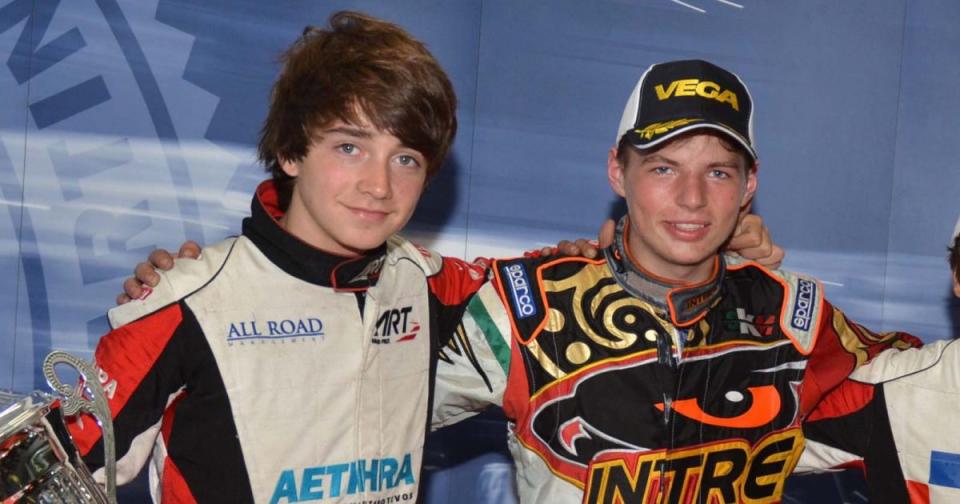

F1 is considered the pinnacle of motorsport, with many racing drivers only dreaming about what it might be like to race in the elite series.
With only 20 places available on the grid, only the best of the best stand a chance of ever making it to Formula 1, and even fewer still get the chance to compete at the front of the field.
Below, PlanetF1.com looks at what it takes to become an F1 racing driver.
Talent
First and foremost, drivers must have talent. The 20 racing seats available in Formula 1 racing are reserved for the best in the world, therefore every driver you see on the track will excel at racing.
Most F1 drivers will have started off their racing career participating at the very bottom of the motorsport ladder, in karting, from around the ages of 8-14 years, though some drivers start karting even as young as four or five years old.
Karting helps improve racing skills and shows which drivers have the potential to go further, initially into faster single-seater categories such as Formula Ford, Formula 4 or Formula Renault.
Money
Unfortunately, motorsport is an expensive sport – and finance is one of the most prohibitive reasons why children at grassroots level stop competing or cannot even start in the first place.
From every level through karting up to Formula 1, the costs will be steep, and only become more expensive as they go through the categories.
Those who are lucky enough to own a kart to begin with will need to have enough money to address mechanical issues, to enter races and much more.
That’s why some drivers may never reach Formula 1 level, even if they are extremely talented.
It isn’t easy to find sponsors, and with the cost to enter races so high, even if you get sponsorship, drivers will normally have to find other ways to settle the costs on top.
Lewis Hamilton’s father Anthony famously worked multiple jobs to help fund Lewis’ racing career at a young age, while networking as much as possible to help him find sponsorship.
Sometimes, money can be what helps propel some drivers into a Formula 1 seat over others, if they bring enough sponsorship backing with them for the team to receive investment as well.
Known as ‘pay drivers’, these drivers often do not receive the same salary as others on the grid, but their value to the team is helped enormously through a combination of talent and money to add to the team’s coffers.
Smaller teams have traditionally made more use of pay drivers over the decades in Formula 1, with every penny earned in sponsorship helping them develop their cars.
Fitness
Formula 1 drivers must be incredibly fit in mind and body to be able to withstand the 5G of force a car can experience when it enters a corner at high speed lap after lap.
Today’s F1 drivers are some of the best athletes in the world – they are super fit and often enter athletics and sports competitions between racing seasons.
Racing drivers need to be strong and resilient to be able to withstand the forces they are subjected to on the track and successfully complete the race.
In very hot races, the inside of the cockpit can become overheated meaning a driver loses around 3kg (7lb) of fluid in one race, with Singapore being the toughest physical challenge of the year through the length of the race and the humidity the drivers experience.
F1 drivers also need strong arms and neck muscles to control the vehicle in long races and they will often perform exercises that improve hand-eye coordination, concentration, and reaction time.
Some teams and drivers have posted social media videos of reaction tests they do and pre-race warm-ups to illustrate the physical prowess required to drive a modern Formula 1 car.
Dedication
Becoming a racing driver takes up a lot of time and requires a lot of dedication.
Even if drivers are not at Formula 1 level, they will be expected to dedicate most of their time to getting there.
Weekends will be taken up with competing in races, while some of the races will require extensive travel.
After the races, drivers will be expected to analyse their race data to see where they might have gone wrong and where they could improve.
Drivers will also need to visit the gym regularly to maintain fitness ready for the next race and attend regular meetings with sponsors.
Time spent with friends and family will be regularly sacrificed, due to the years of their lives the drivers will have to put into rising through the categories in a bid to put themselves in position to be selected for a Formula 1 seat.
FIA Super Licence
To become a Grand Prix racing driver, drivers will have to possess a FIA Racing Super Licence, allowing the licensee to compete in the Formula 1 World Championship.
To apply for a Super Licence, drivers will need to pass the following criteria:
-
Be over 18 years old
-
Be an international class competition licence holder
-
Possess a valid driver’s licence in your country of origin
-
Pass an FIA theory test on Formula 1 sporting regulations
-
Complete 80% of two seasons in qualifying single-seater championships
-
Accumulate 40 Super Licence Points over 3 seasons in any qualifying championship
-
Possess a licence score
We’ve seen many a driver fall short of reaching the requirements to hold a Super Licence in the past, and the way the points are divided among different series has caused debate in motorsport circles – with arguments that IndyCar does not receive enough points for its drivers, for example.
We have already put together a comprehensive guide on the FIA Super Licence, available below, and how prospective F1 drivers can gather points, with that being a potentially lengthy process on its own.
PlanetF1.com recommends
FIA Super Licence explained: How drivers can reach the magic 40-point mark to race in F1
F1 drivers and their partners: Who are the grid currently dating or married to?
F1 junior driver academies
Once you are in a team in a junior series, you may be lucky enough to get into a driver academy attached to a Formula 1 outfit.
The driving academies scout for new young drivers and train them with the end goal of a graduation to Formula 1.
Getting into an academy can elevate you up the ranks quicker as it provides expert coaching designed to train F1 drivers of the future, as well as crucial financial backing that can help propel young drivers forward.
Red Bull have arguably been the most productive team when it comes to producing young F1 drivers since they joined the grid in the mid-2000s, with Toro Rosso/AlphaTauri serving as a proving ground for the ‘senior’ team and a host of drivers having made their way through the ranks, with Max Verstappen and Sebastian Vettel having gone on to become World Champions through their system.
Joining the junior team of a constructor already on the F1 grid is not a guaranteed way of getting a drive, but it certainly doesn’t hurt your chances either.
The article How to become an F1 driver: Money, dedication, talent and more appeared first on Planetf1.com.






